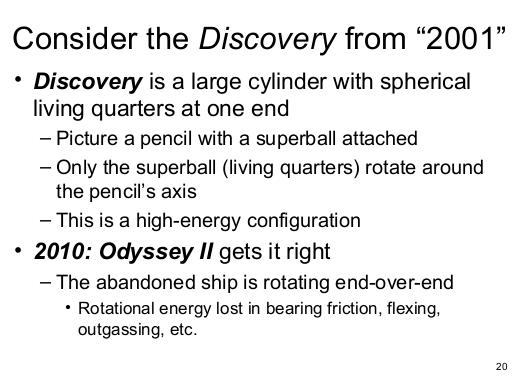
NOTES
Arthur C. Clarke gets this right in 2010 (at least in terms of the final state of the system). The initial situation involves part of the ship rotating very fast around an axis with a small moment of inertia - a high energy configuration for the given amount of angular momentum. The "Discovery" is found after 9 years of being abandoned, rotating end-over-end - in other words, around its largest principal axis, having shed much of its rotational energy. In this case, I expect that much of the energy was lost in the bearings that allowed the living quarters to rotate mostly independently of the rest of the ship, with outgassing from the ship providing another way to lose energy (and in that case, lose some angular momentum too).
